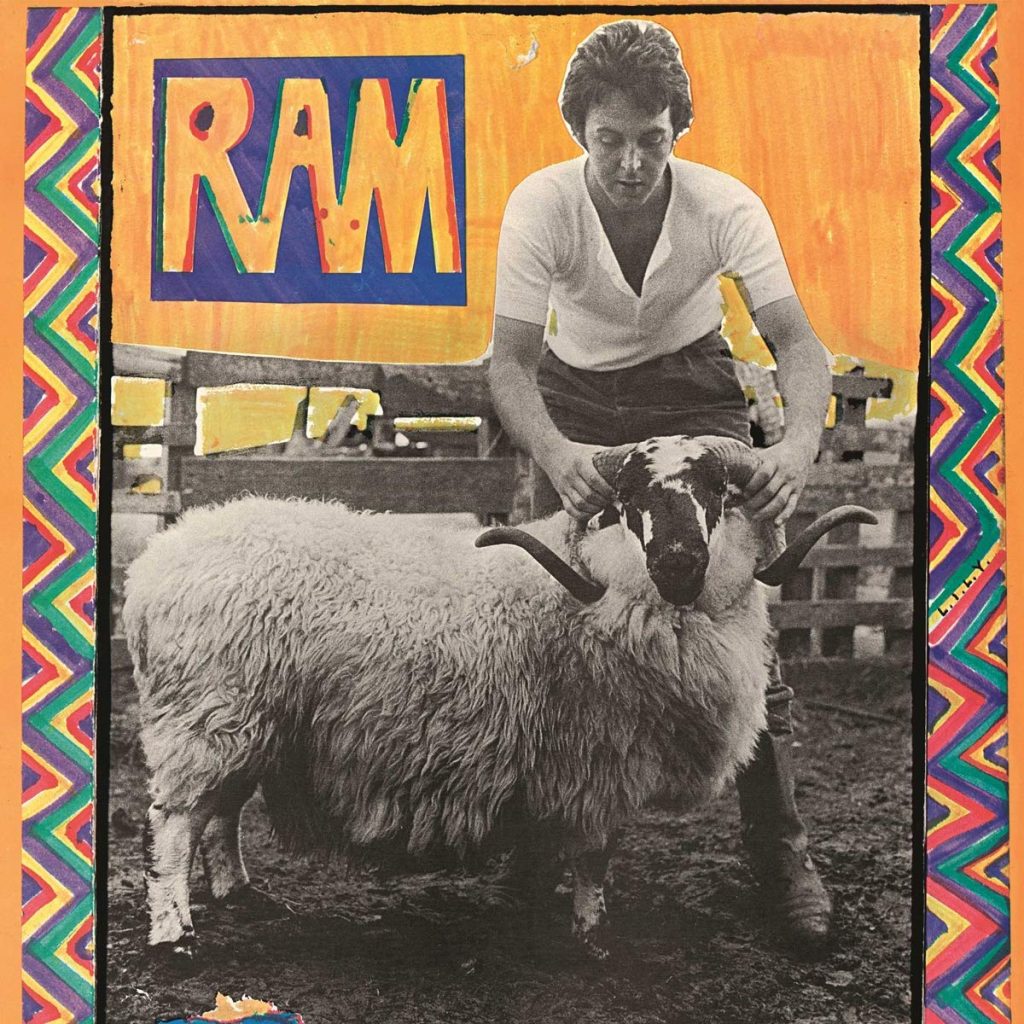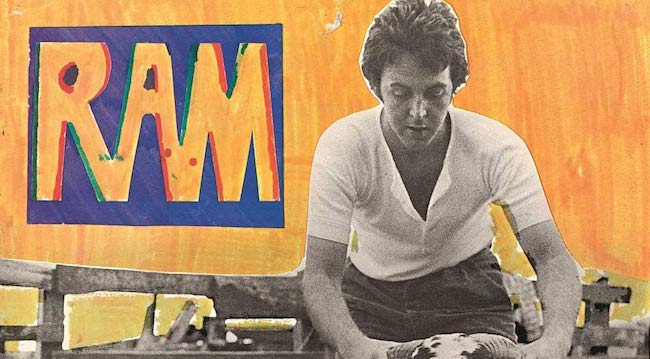 No matter what Paul McCartney had opted to do in the immediate aftermath of his departure from the Beatles, it was clear he’d have a tough act to follow. Wisely, then, his first solo album, the stripped-down McCartney, found him eschewing massive production and playing all the parts himself in true solo style. The fact that several songs were originally intended for his former band allowed him to keep some consistency, while still giving him artistic freedom and the ability to define himself beyond the band’s famously studious approach.
No matter what Paul McCartney had opted to do in the immediate aftermath of his departure from the Beatles, it was clear he’d have a tough act to follow. Wisely, then, his first solo album, the stripped-down McCartney, found him eschewing massive production and playing all the parts himself in true solo style. The fact that several songs were originally intended for his former band allowed him to keep some consistency, while still giving him artistic freedom and the ability to define himself beyond the band’s famously studious approach.
Ram, on the other hand, was an attempt to flex his musical muscle through the use of ornate arrangements and a group of hired hands, plucked mostly from the New York studio scene, where the sessions were based. While the album was mostly packed with catchy melodies in true Macca tradition, it was widely derided as being too cloy, too cutesy and wholly inundated with puerile pop and pretension. The fact that Linda McCartney was given equal billing didn’t help matters either; possessing questionable musical ability, her role was confined to that of a backing vocalist. Yet even that limited exposure didn’t deter the criticism. Instead, it simply amplified the antagonism by underscoring the self-conscious over-indulgence that pervaded the effort overall.

While the press was generally scornful, the fiercest criticism came from McCartney’s former bandmates. Released on May 17, 1971, the album made its appearance in the aftermath of the bitter court battle that took place in the wake of the Beatles’ break-up. It was hardly surprising then that some of the tracks—“3 Legs,” “Dear Boy” and “Too Many People” being the more obvious examples—were viewed by John Lennon in particular as a direct assault on him and Yoko Ono. The lyrics to the latter seemed to bear that out.
“Too many people going underground
Too many people reaching for a piece of cake
Too many people pulled and pushed around
Too many waiting for that lucky break”
Still, the most apparent dig came in the form of a picture on the album’s back cover, which showed a pair of beetles copulating. It appeared intended to show the screw job that Paul felt he was getting at the hands of his former bandmates.
While McCartney conceded that he was intent on making a point, he later claimed that at least one of the songs in question, “Dear Boy,” was aimed at Linda’s ex-husband, and not at Lennon at all. Nevertheless, that didn’t stop John from enacting his revenge. His song, “How Do You Sleep,” viciously attacked his ex-partner for making “Muzak” and reducing his efforts to rubbish. The initial pressing of Lennon’s Imagine album included a postcard showing him pulling on a pig’s ears, mocking McCartney’s cover shot that pictured him tugging on a ram’s horn in the same way.
So much for peace and love.
Despite the animosity leveled from all sides, the album still scaled the charts and even managed to bring McCartney his first number one hit since leaving the Beatles, courtesy of the chirpy mini-medley “Uncle Albert/Admiral Halsey.” A giddy piece of puffy pop, its ear-candy effect made it the very definition of a guilty pleasure, courtesy of a catchy chorus and a flighty flugelhorn that enlivens the reprise.
Ultimately, for all the criticism tossed his way, McCartney and his hired hands—future Wings drummer Denny Seiwell and guitarists Hugh McCracken and David Spinozza—did an admirable job of conveying the mirth and merriment inherent in these songs. “Smile Away” and “Monkberry Moon Delight” are formidable rockers, while “Too Many People,” despite any arched intent, maintains a steady stride and boasts one of McCartney’s most searing vocals.
Other tracks betray their charms as well, among them the whimsical “Heart of the Country,” the unabashed romp of “Eat At Home” and the gooey love song “The Back Seat of My Car” chief among them. Granted, there were several throwaways as well, the two-part “Ram On” and the aforementioned “3 Legs” in particular.
Those tunes were at least partially to blame for why Ram fared so poorly in comparison to the solo efforts released by his former compatriots at the time. It seemed to indicate that McCartney’s reputation was at risk of being irreparably tarnished and tattered, at least for the foreseeable future.
The album that followed, Wild Life and Red Rose Speedway, both billed as Paul McCartney and Wings, did little to dissuade that belief. It would take the later efforts Band on the Run and Venus and Mars to convince his detractors he was still capable of Beatles-level brilliance. That said, some 50 years on, Ram manages to resonate with its own kind of Macca magic.
Watch McCartney perform “Ram On” live in Liverpool in 2011
Related: Our Album Rewind of Band on the Run
McCartney’s vast solo catalog is available in the U.S. here and in the U.K. here.


6 Comments
I remember getting RAM on a cassette, and playing it over and over again. As a dedicated Beatles fan, it did take a few times to get used to McCartney’s new direction… Today, it still stands as my favorite McCartney solo record of all, with Band on the Run as a close second
Love this album, it is full of pure pop pleasures, he is the melody man of the Beatles and it shines here
I’d say 3 Legs is, in fact, one of the best songs on Ram and Lennon himself liked it even if at least part of the song appeared to be directed at him. The music on Ram is fantastic and the album has been reevaluated positively almost across the board though, like much of McCartney’s post-Beatles work, the lyrics generally don’t rise to the level of his Beatles’ work.
I bought my first copy of Ram 52 years ago and it is still my favorite McCartney album .
Nice I was only 10 years old I remember my parents had the album and it seemed to have a few songs that were inadvertently directed towards younger ears like uncle Albert… I think too many people is one of his best songs. It’s a cranker
This album is high on my list of the 20 albums I must have if I’m ever stranded on a desert island (miraculously with electricity and a great turntable, amp and speakers).